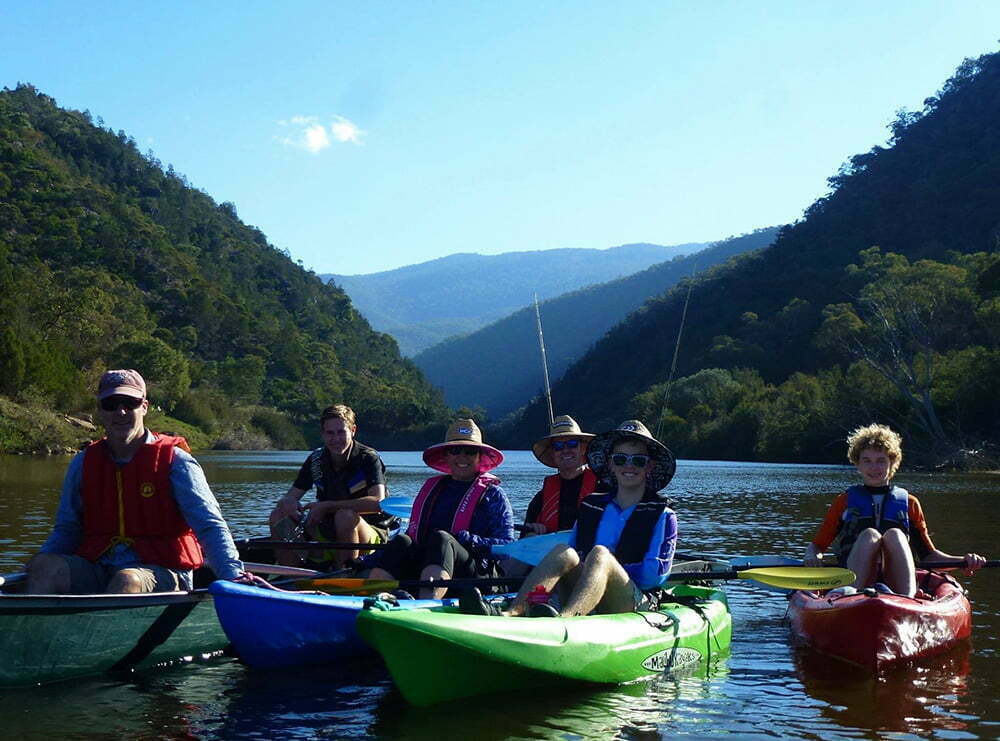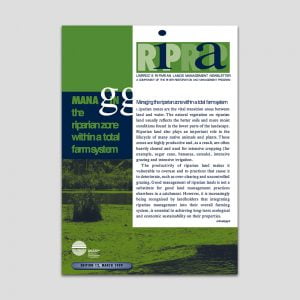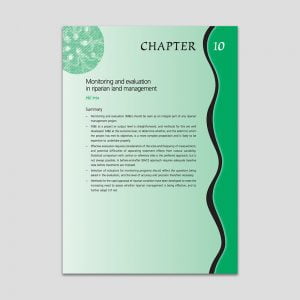 Riparian lands and water courses have multiple uses and values. Riparian vegetation protects streams by slowing surface runoff, absorbing nutrients and trapping sediment and other contaminants before they reach the water. It stabilises stream banks and protects them from different types of erosion. It also provides shade, reducing light levels and water temperatures and preventing the excessive growth of nuisance plants and algae. Riparian vegetation is an essential source of the food that underpins native aquatic ecosystems in the form of leaves, twigs, fruit and insects. The large pieces of wood that fall into streams and undercut banks protected by plant roots are crucial to aquatic habitat.
Riparian lands and water courses have multiple uses and values. Riparian vegetation protects streams by slowing surface runoff, absorbing nutrients and trapping sediment and other contaminants before they reach the water. It stabilises stream banks and protects them from different types of erosion. It also provides shade, reducing light levels and water temperatures and preventing the excessive growth of nuisance plants and algae. Riparian vegetation is an essential source of the food that underpins native aquatic ecosystems in the form of leaves, twigs, fruit and insects. The large pieces of wood that fall into streams and undercut banks protected by plant roots are crucial to aquatic habitat.
Riparian benefits
Riparian vegetation can also protect and enhance adjacent agricultural production. It buffers crops and pastures from the wind and windborne materials, and provides habitat for beneficial animals such as insect pollinators and predators of pests. Livestock can shelter from harsh weather and graze understorey grasses and shrubs in riparian land: gain shade during hot seasons and shelter from wind during cold weather, are vital for survival and for optimal growth and production of domestic stock in many parts of Australia. Riparian vegetation itself can form part of the farm’s production system, supplying wood products like timber, poles, posts, firewood and charcoal, or non-wood products like seeds, essential oils, foliage, honey, bushfoods and pharmaceuticals. In addition, some of the natural functions of riparian vegetation, like carbon storage, water filtration and salinity control may in future form part of the farm’s production system, and be valued and traded as part of an ecosystem services market.
Riparian areas and their streams and creeks are also special places for people, and are often highly valued for recreation, their beauty, and as a place to relax and enjoy nature. These are important values and benefits in both rural and urban settings.
Our resource pack contains:

Fact Sheets
Fact sheet 1 – Managing riparian land
Fact sheet 12 – Riparian ecosystem services
Fact sheet 13 – Managing riparian widths

RipRap Magazines
RipRap 12 — Managing the Riparian Zone within a Total Farm System
RipRap 15 — Seeing is believing: The value of demonstration sites
RipRap 21 — What are ecosystem services?
RipRap 23 — Managing Riparian Land To Achieve Multiple Objectives
RipRap 31 — Wrapping up riparian
RipRap 34 — Bringing Back Native Fish
RipRap 35 — Restoring Rivers and Wetlands to Life
RipRap 36 — Celebrating Kati Thanda-Lake Eyre
RipRap 37 — Rivers of Carbon – Rivers of Life
RipRap 38 — Australia’s Northern Rivers and Estuaries
RipRap 39 — Habitat Makes Fish Happen
RipRap 40 — Thrive: Nature, Water and Wellbeing

Guidelines and manuals
Principles for riparian lands management, 2007 (Chapter 10)
A Rehabilitation Manual for Australian Streams — Volume One & Two
Industry river management guides:
Wool industry river management guide: High rainfall zone
Wool industry river management guide: Sheep/wheat zone
Managing riparian lands in the sugar industry
Managing riparian lands in the cotton industry
Managing Riparian Land for Multiple Uses, Lisa Robins

Powerpoint presentation template
A powerpoint presentation template you can use to reflect local riparian characteristics, by inserting photos and examples from your region. The powerpoint presentation has notes to accompany each slide, explaining the key point being made and how you might explain it to others.
Download the resource pack.
This resource pack is free but we rely on donations to keep sharing knowledge. Please click on the button below to download the pack, and we encourage you to donate as much or as little as you are able to. Your contribution gives us fuel to build future resources for you and others alike.